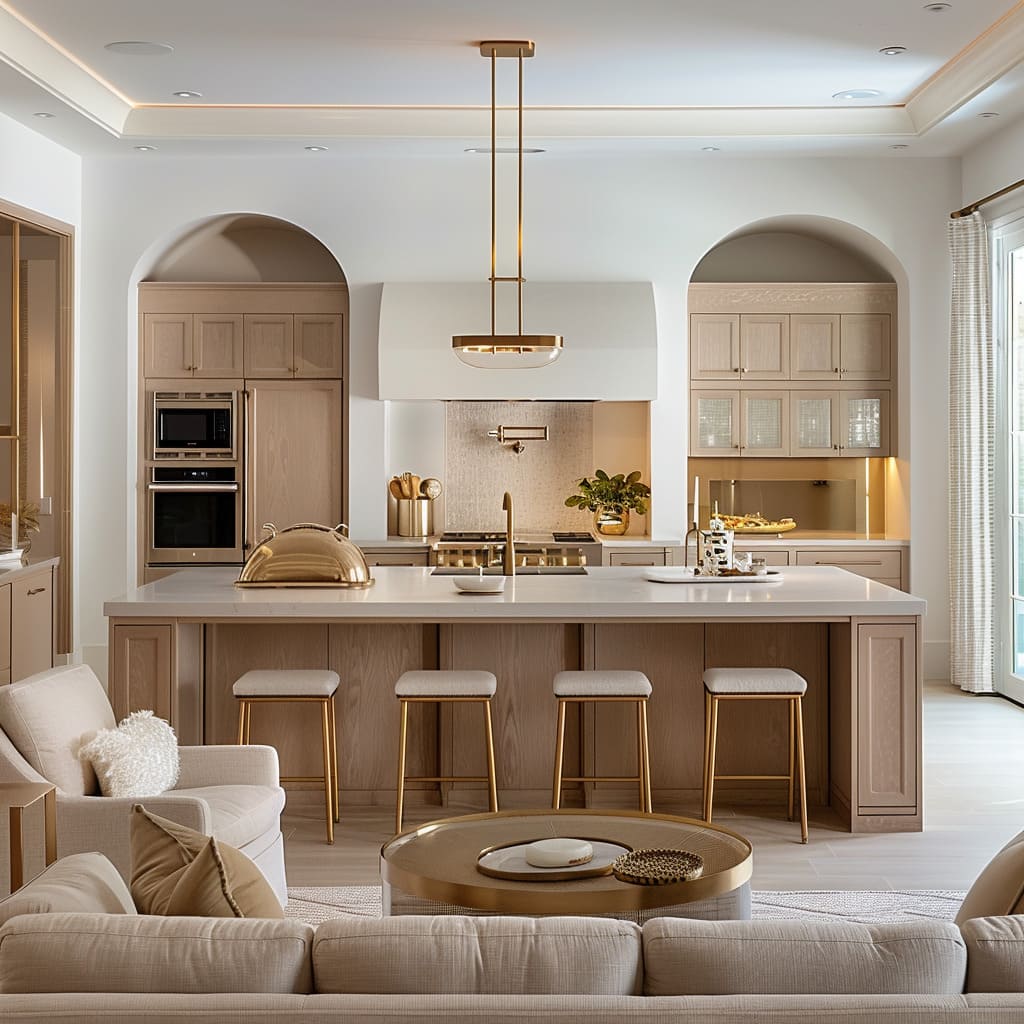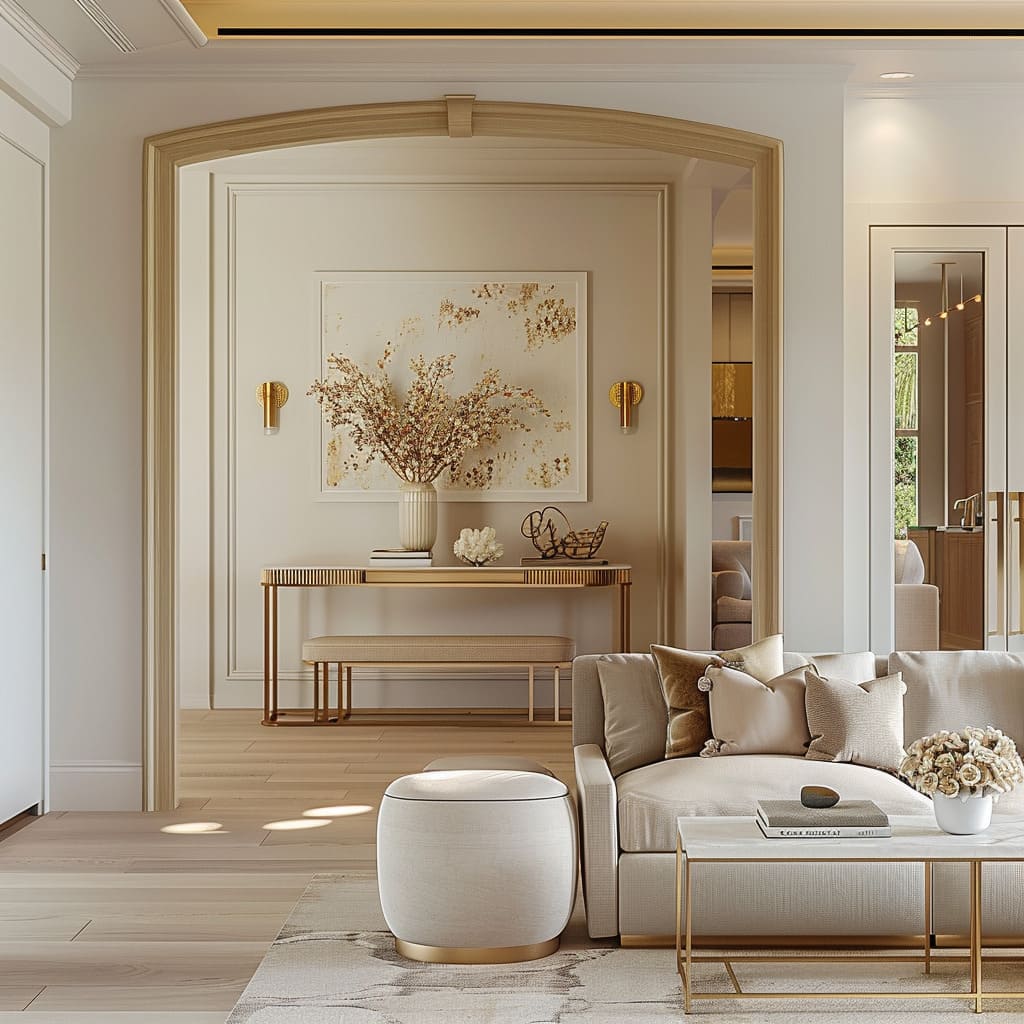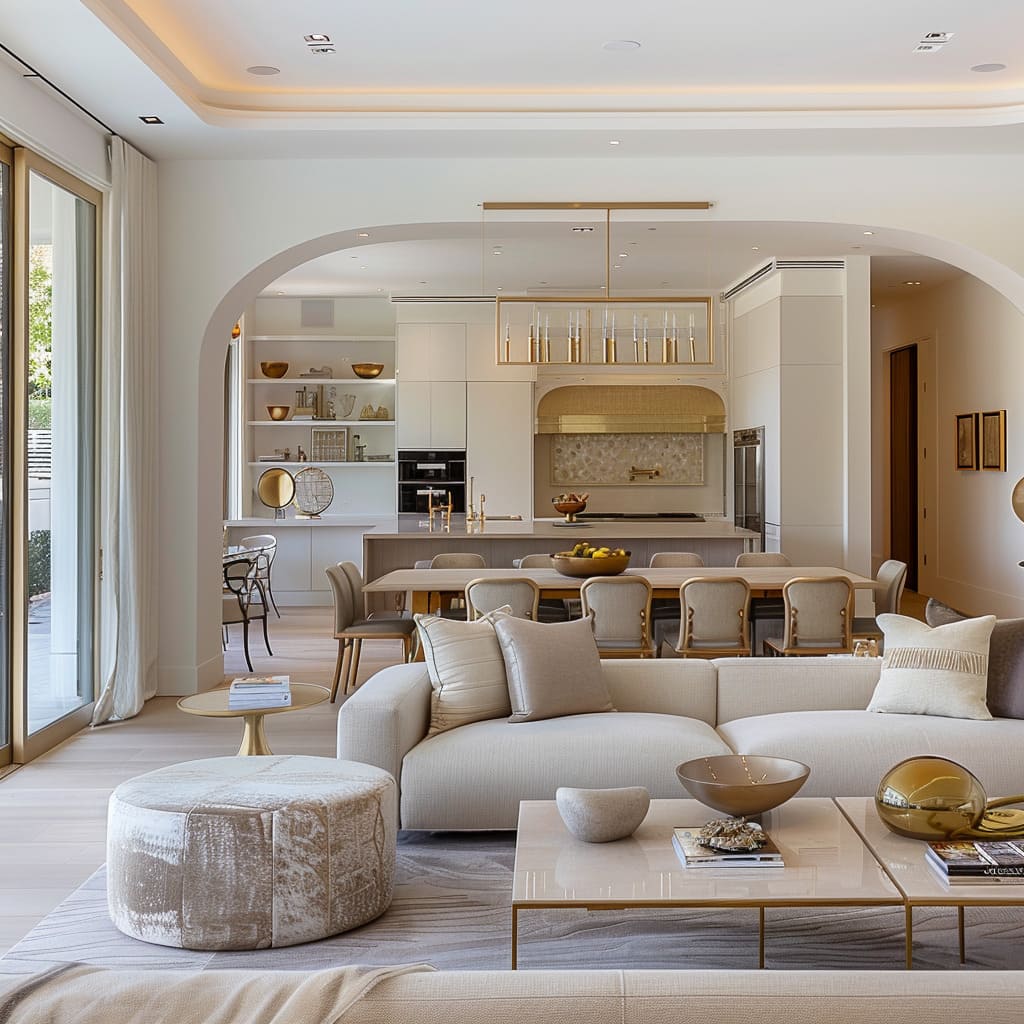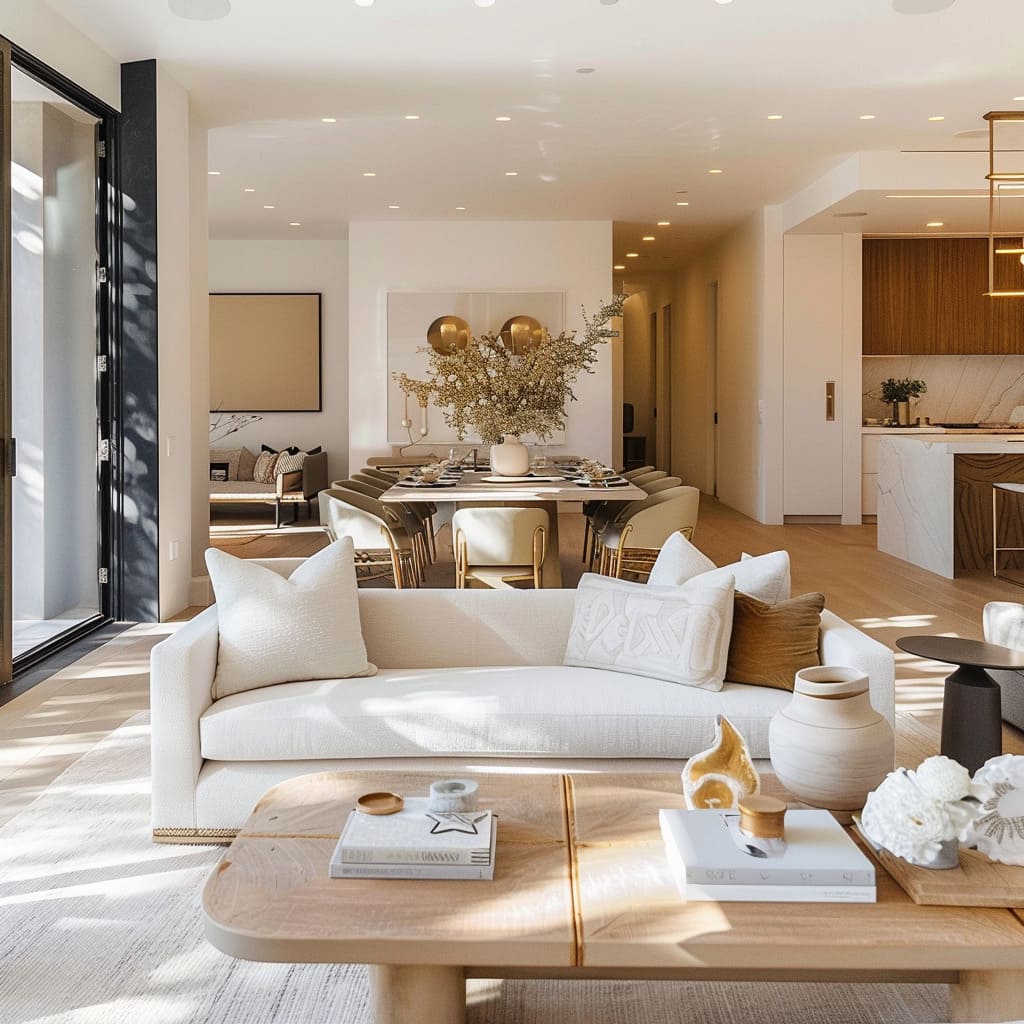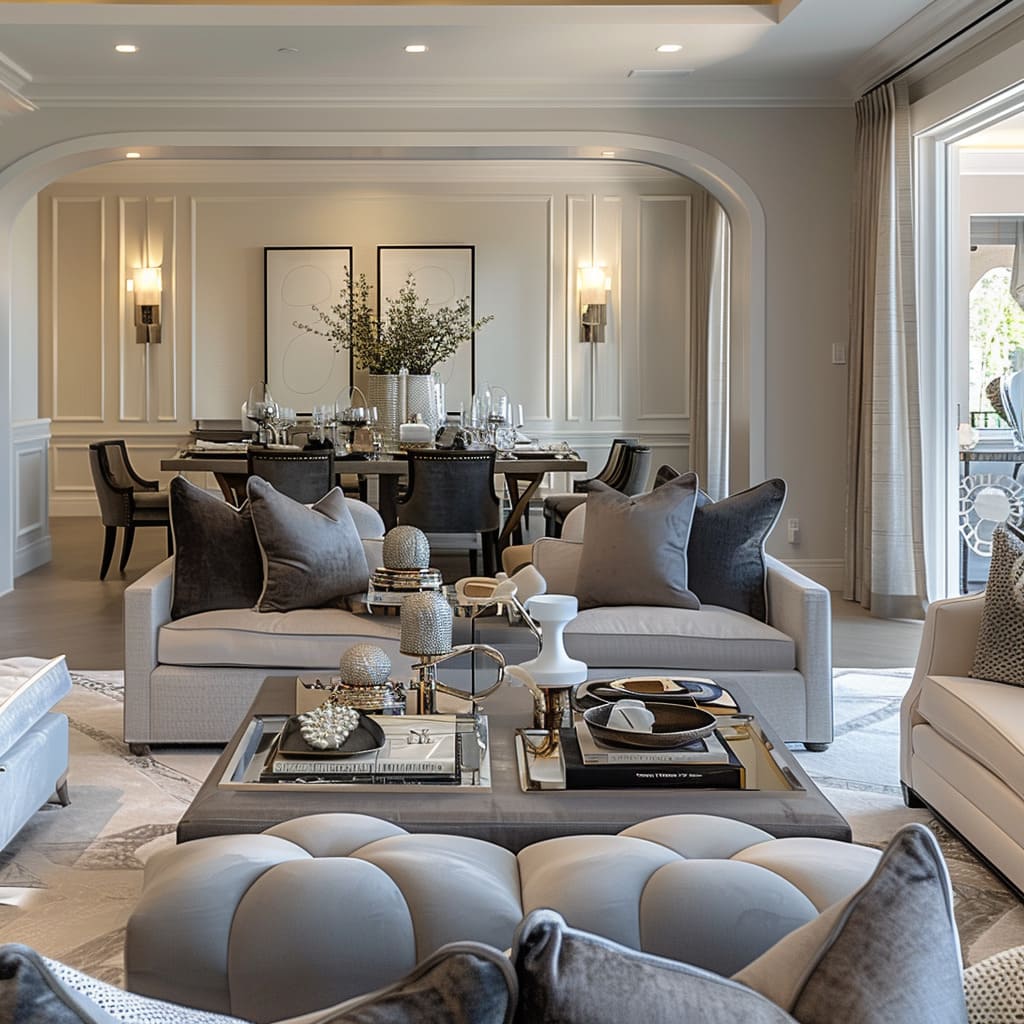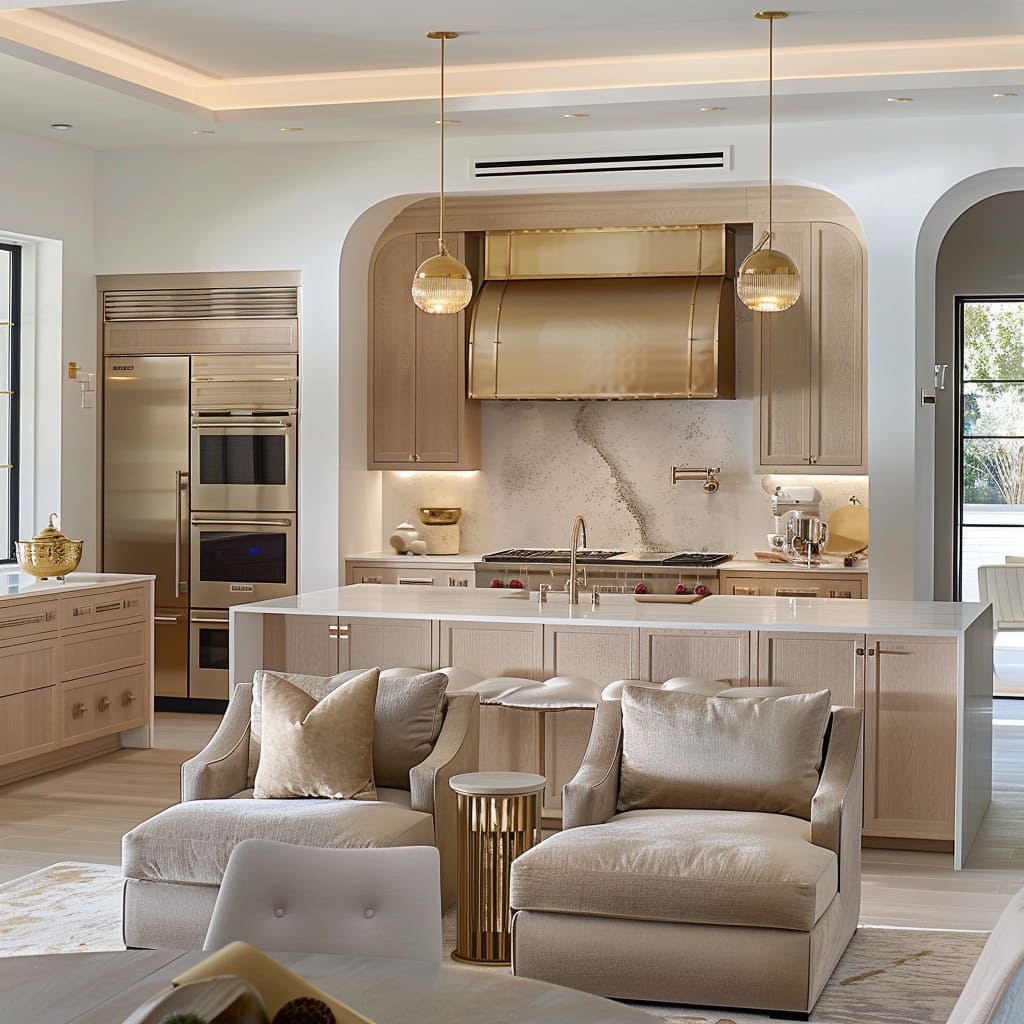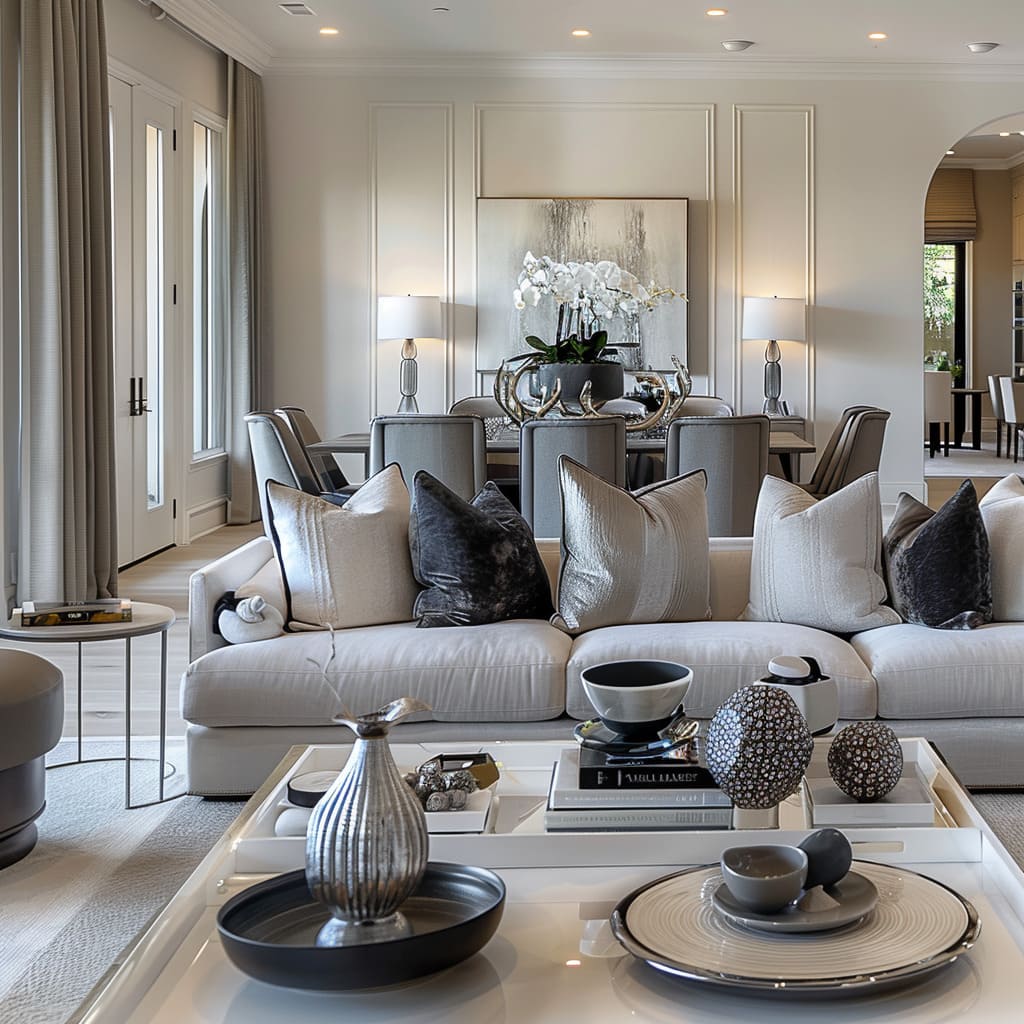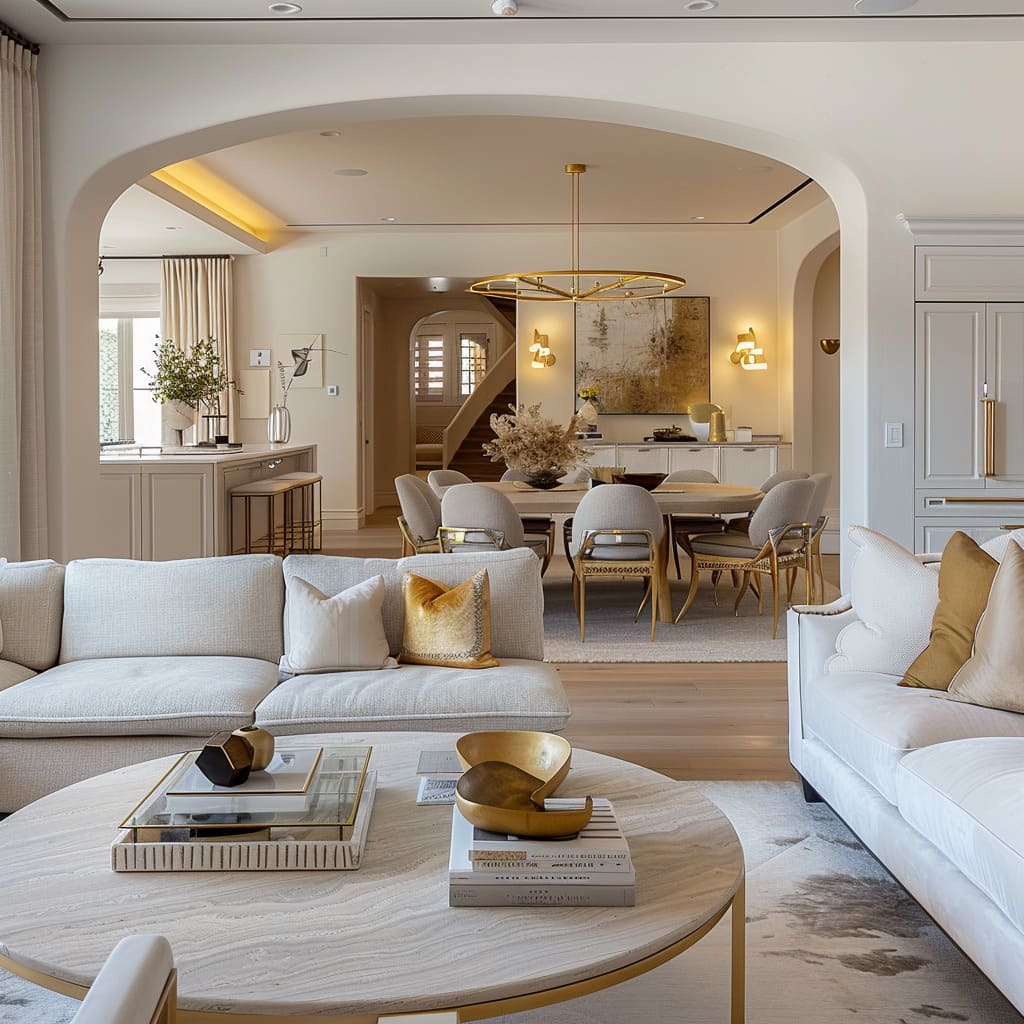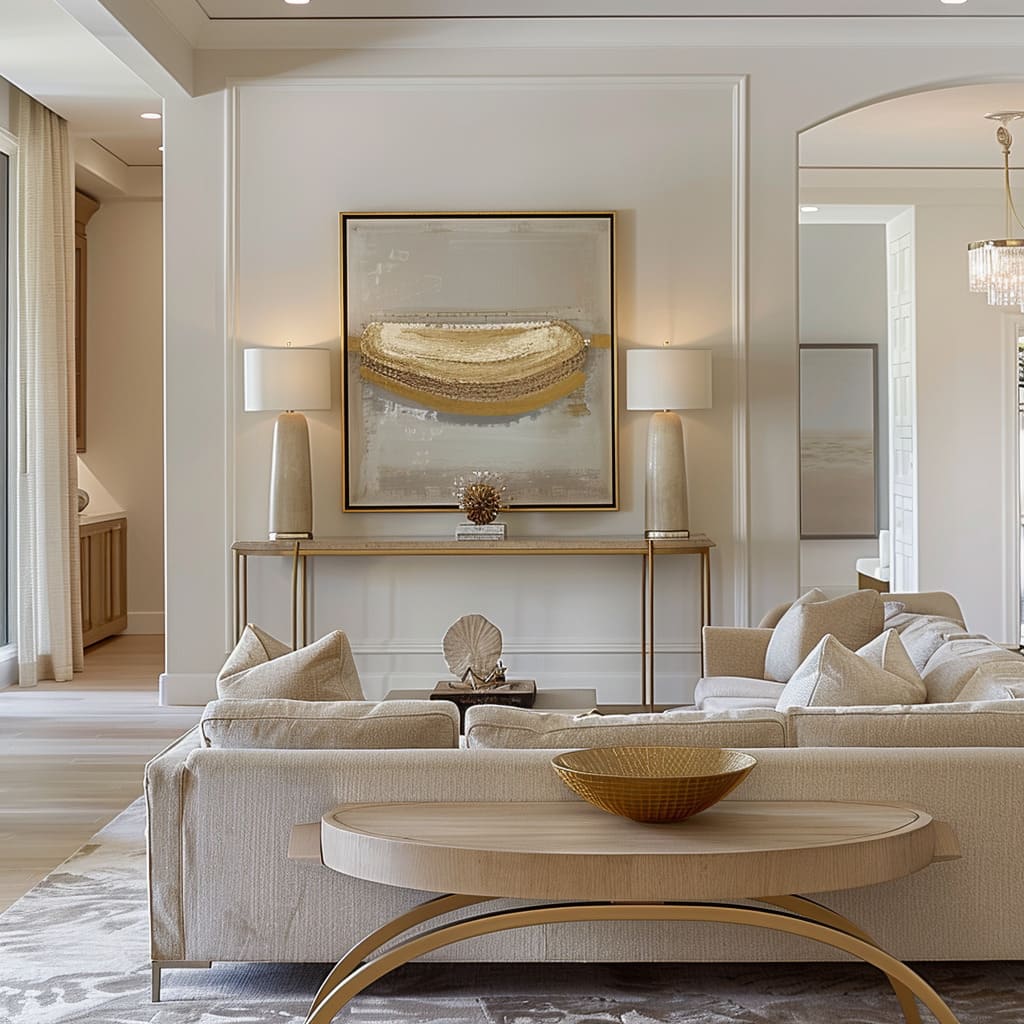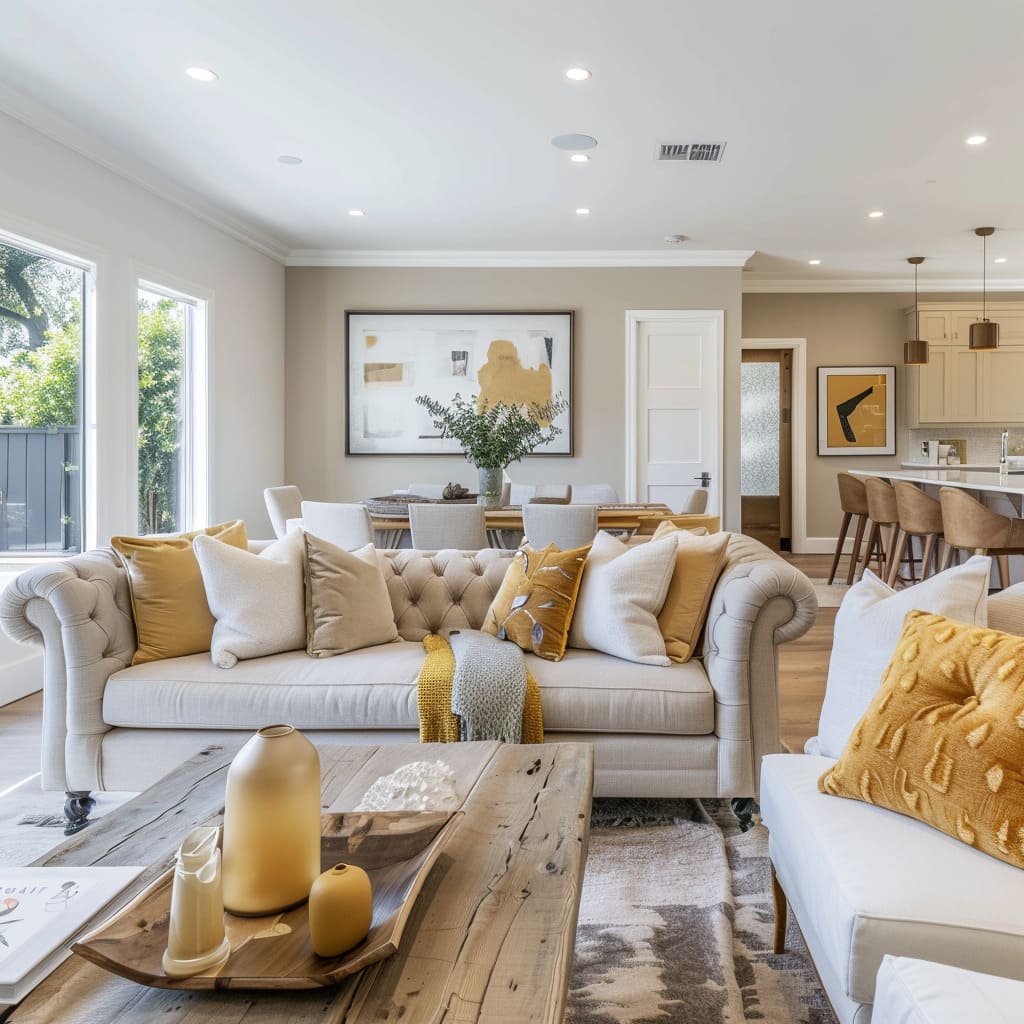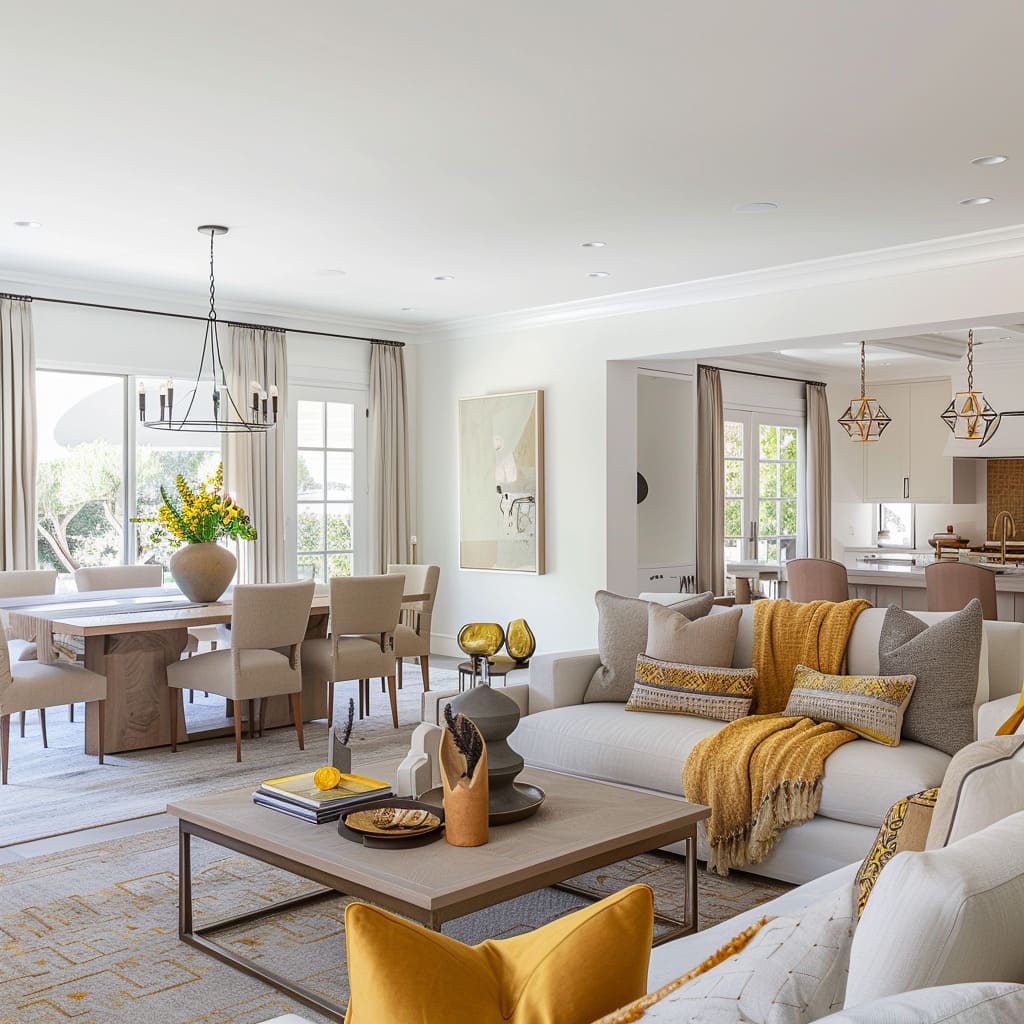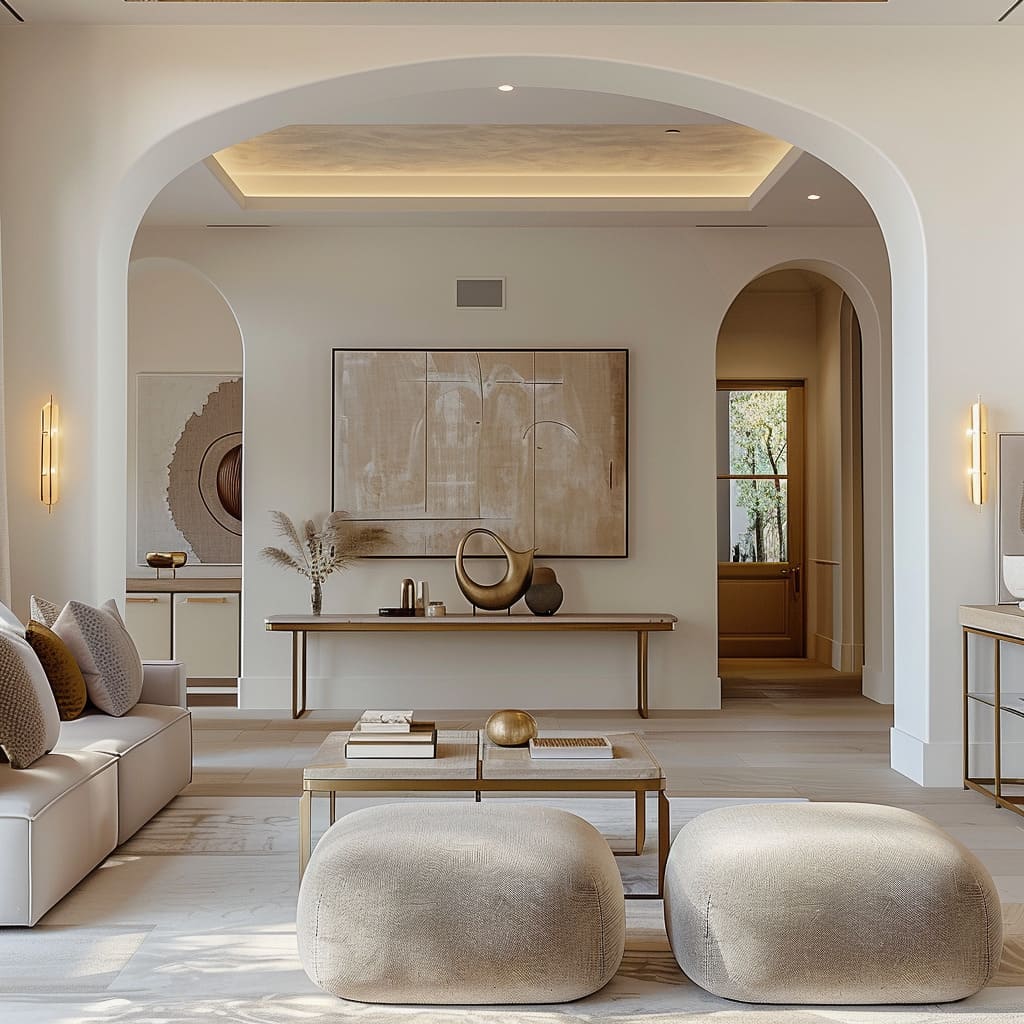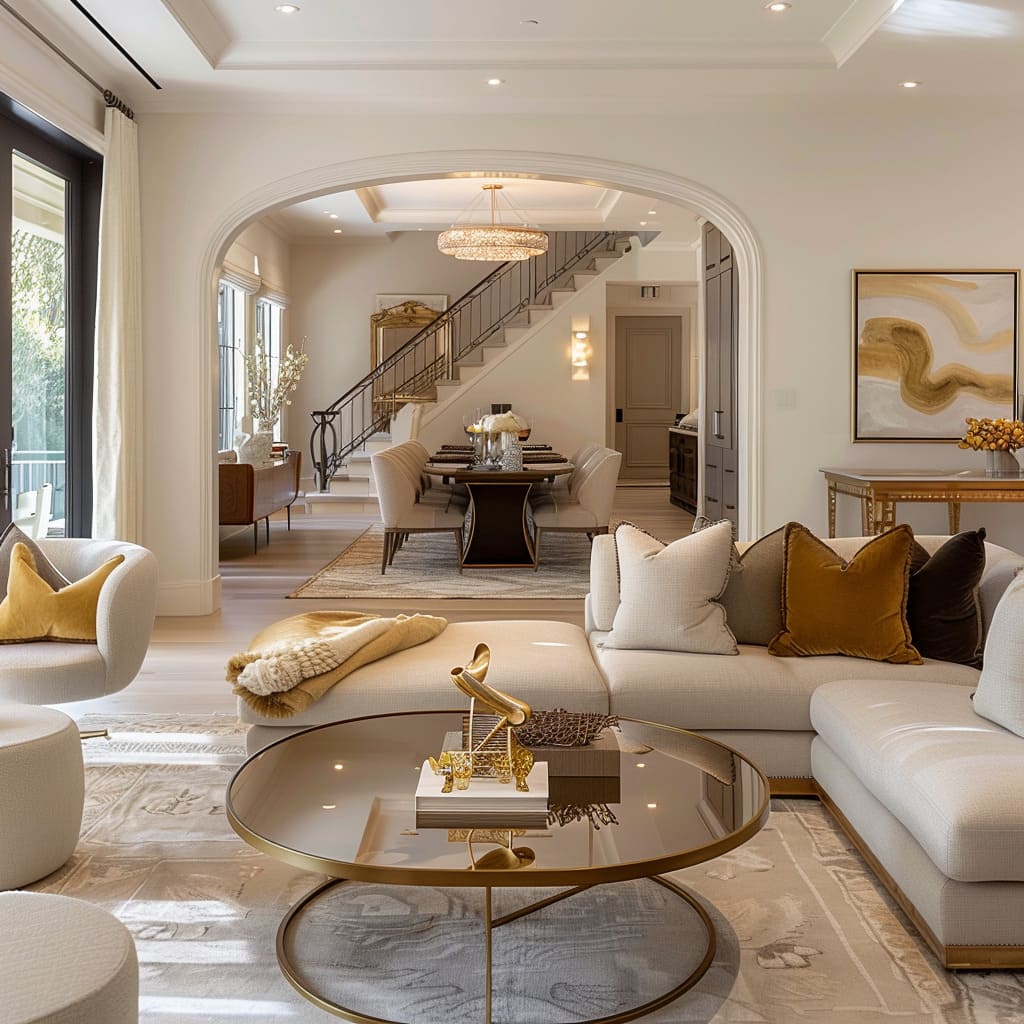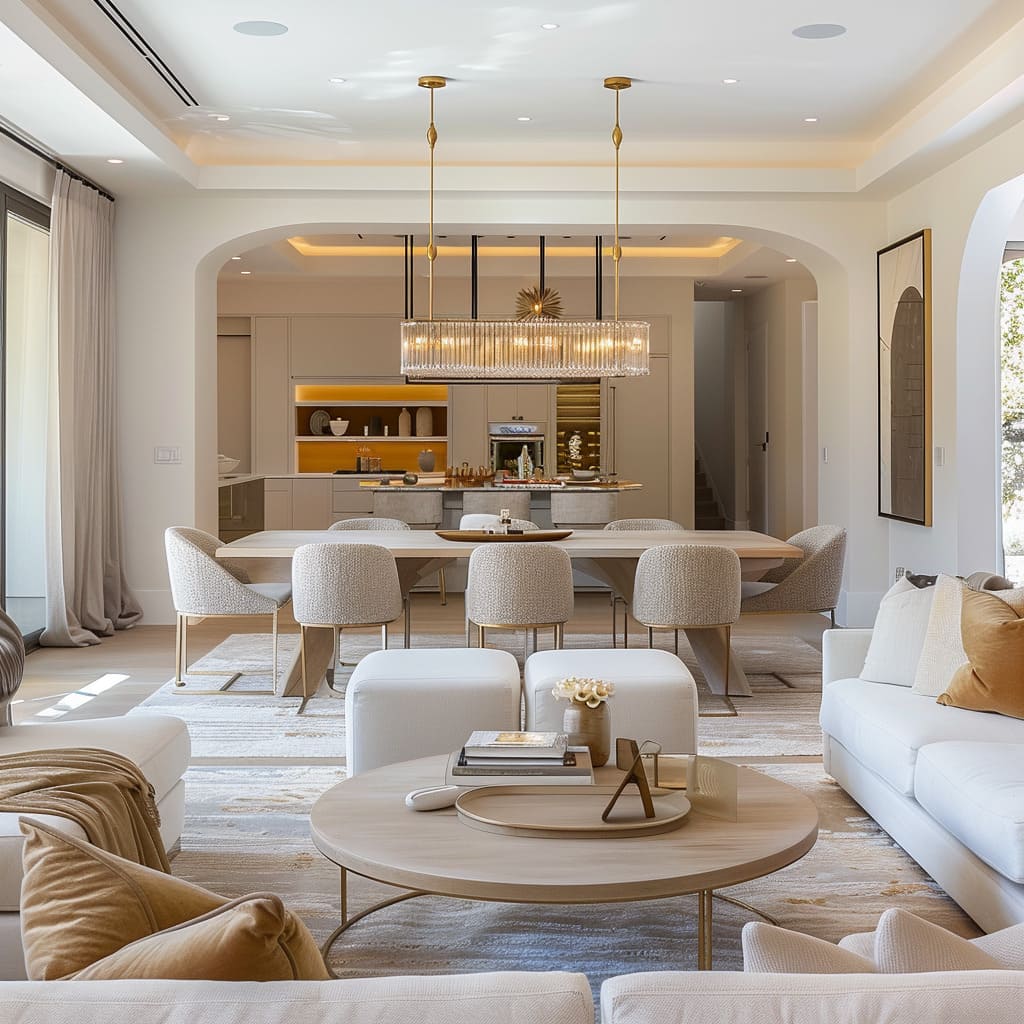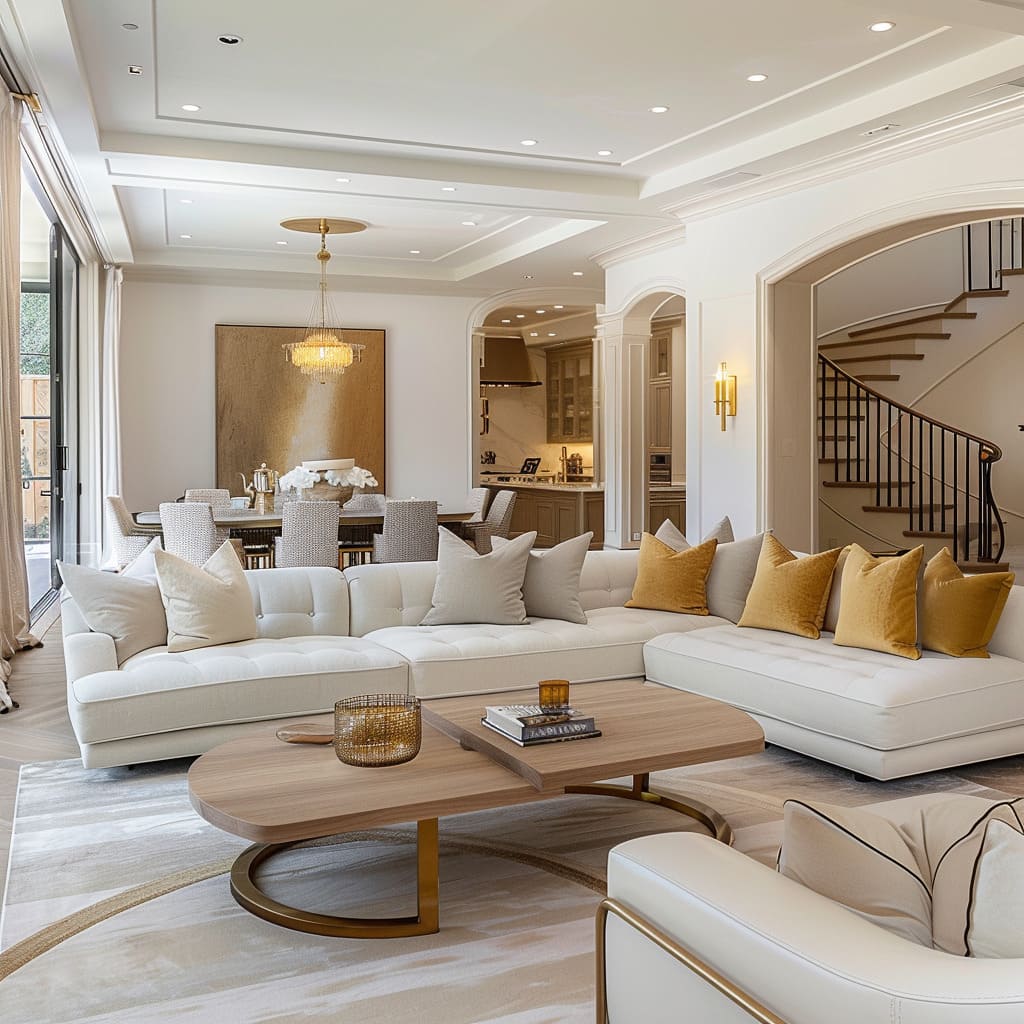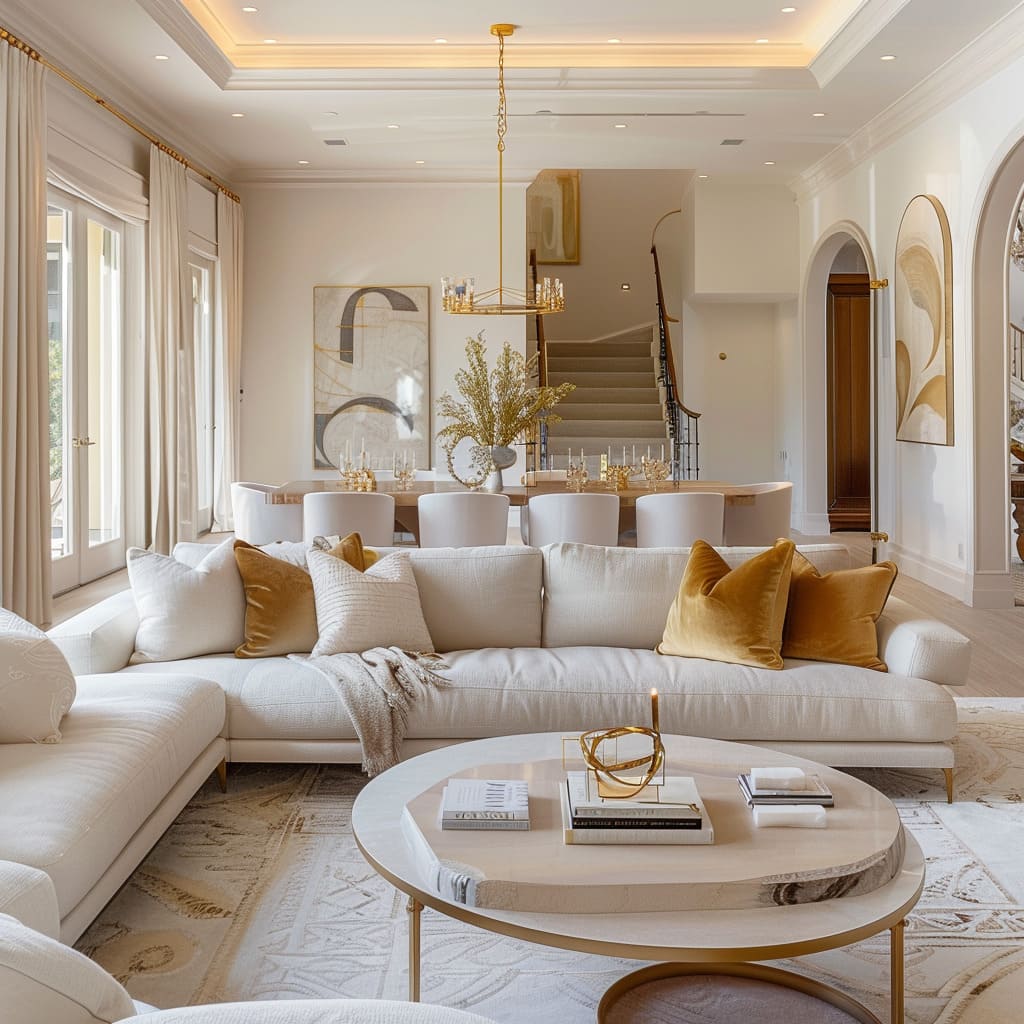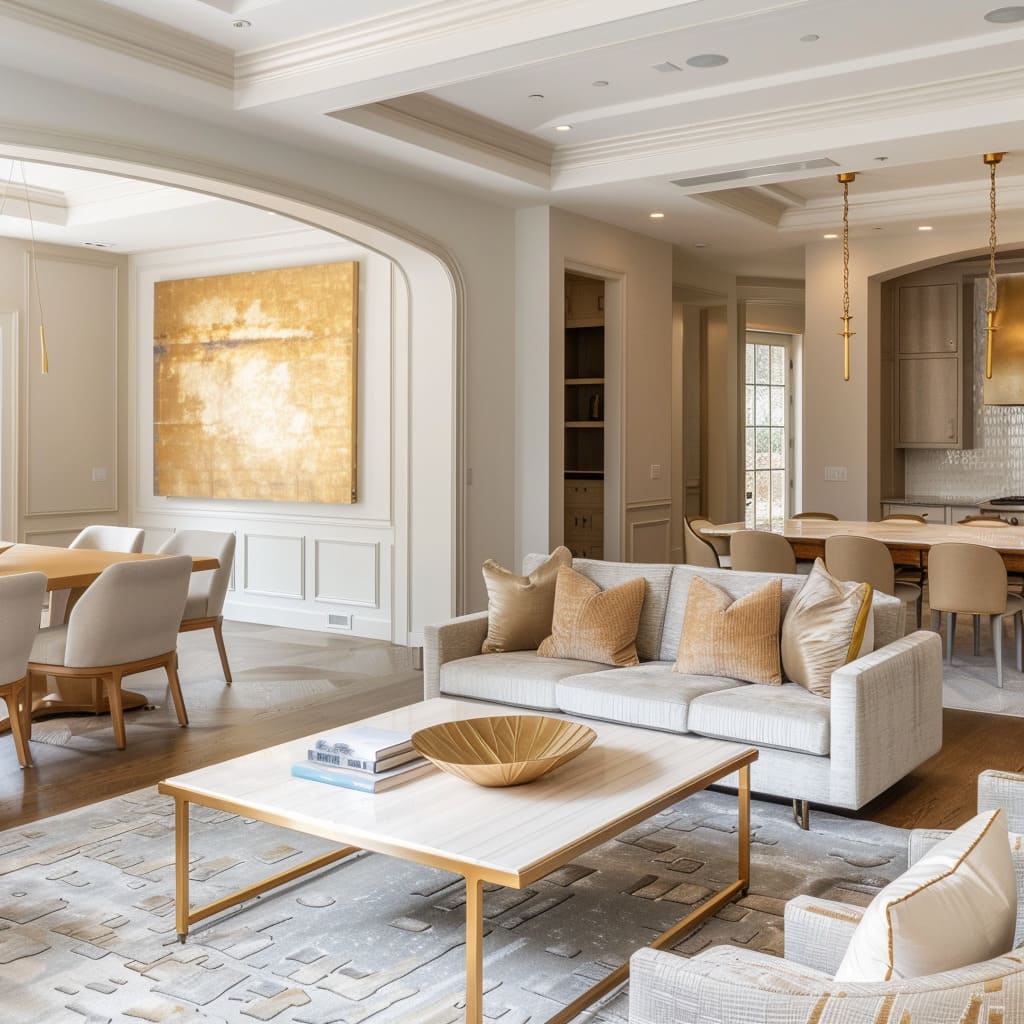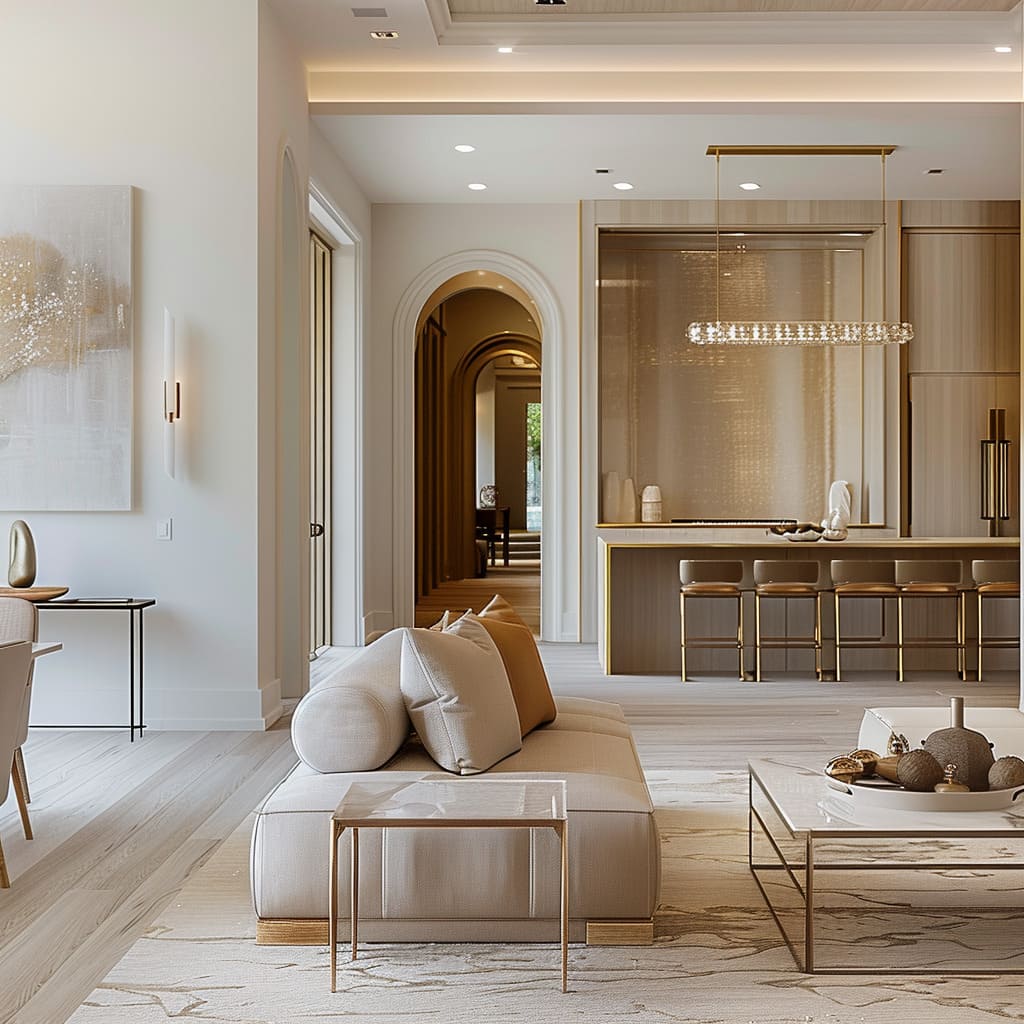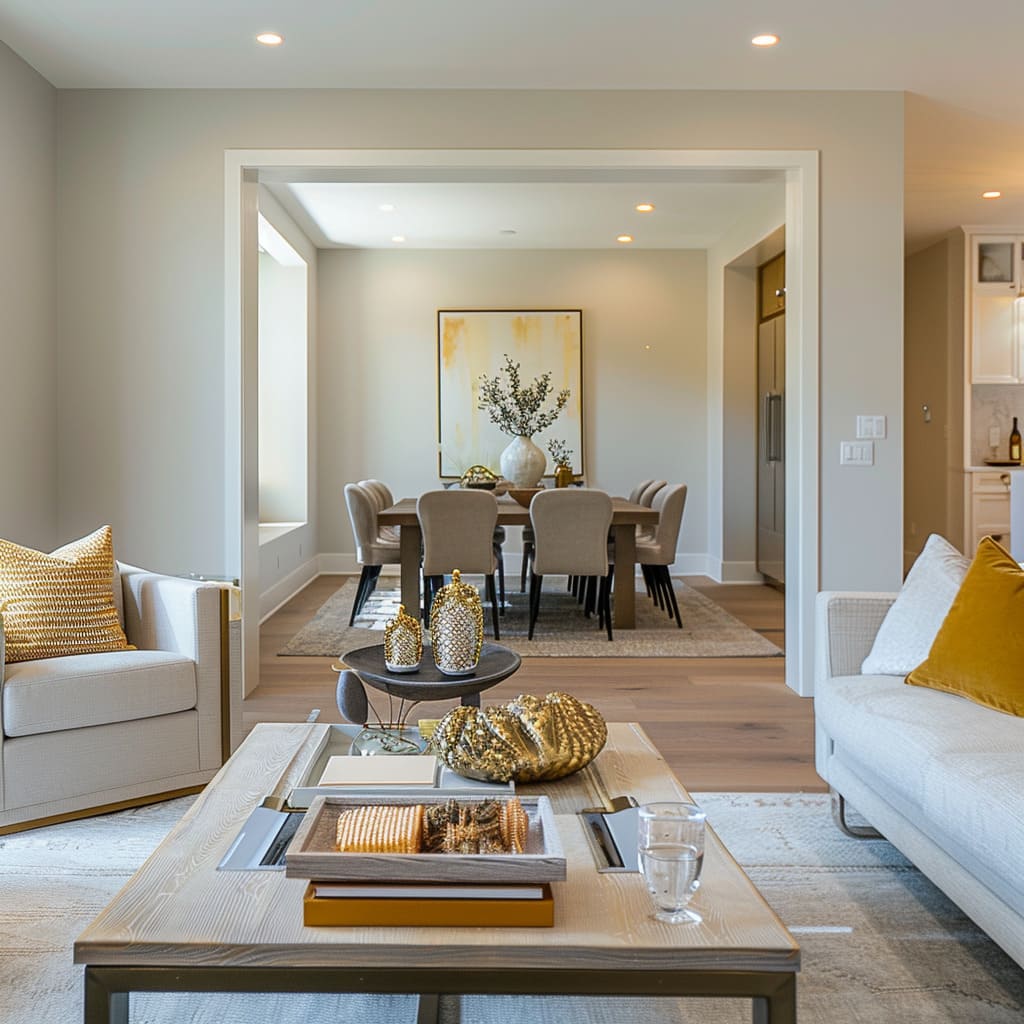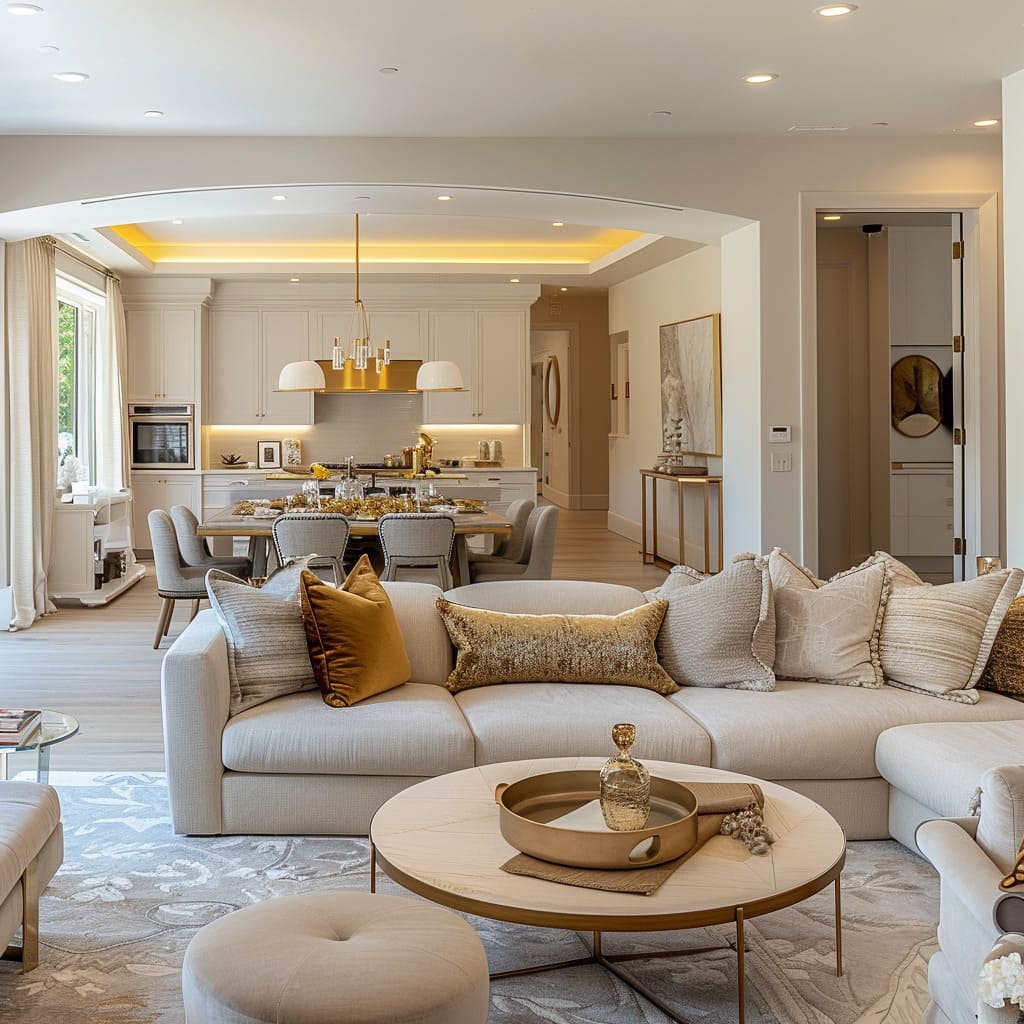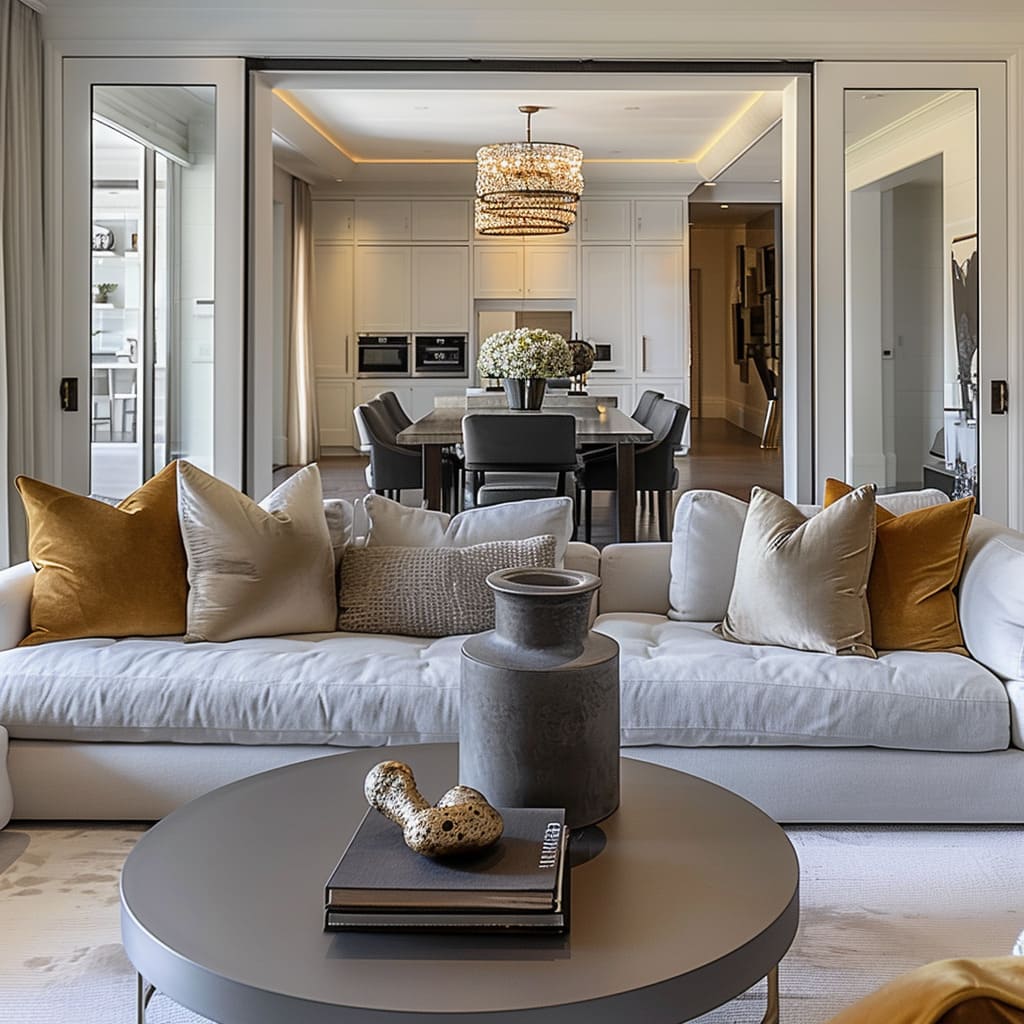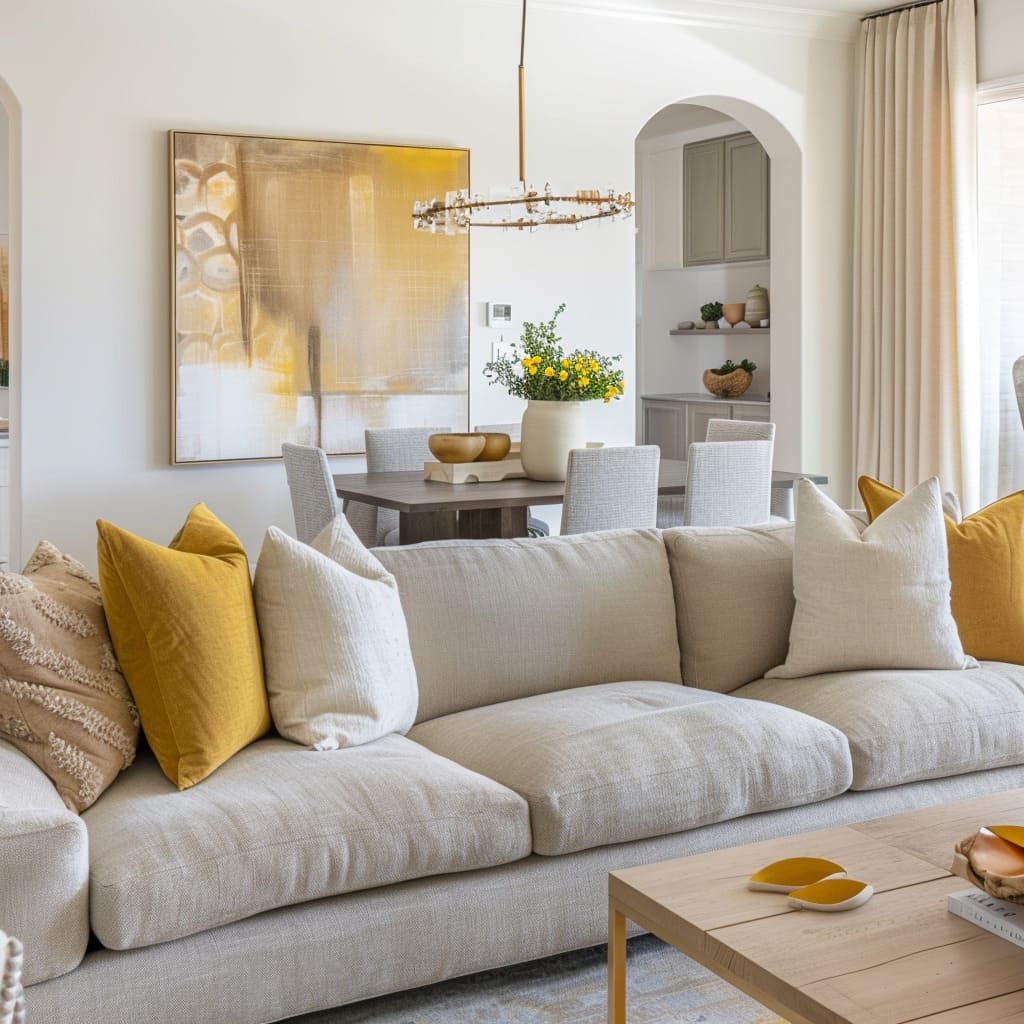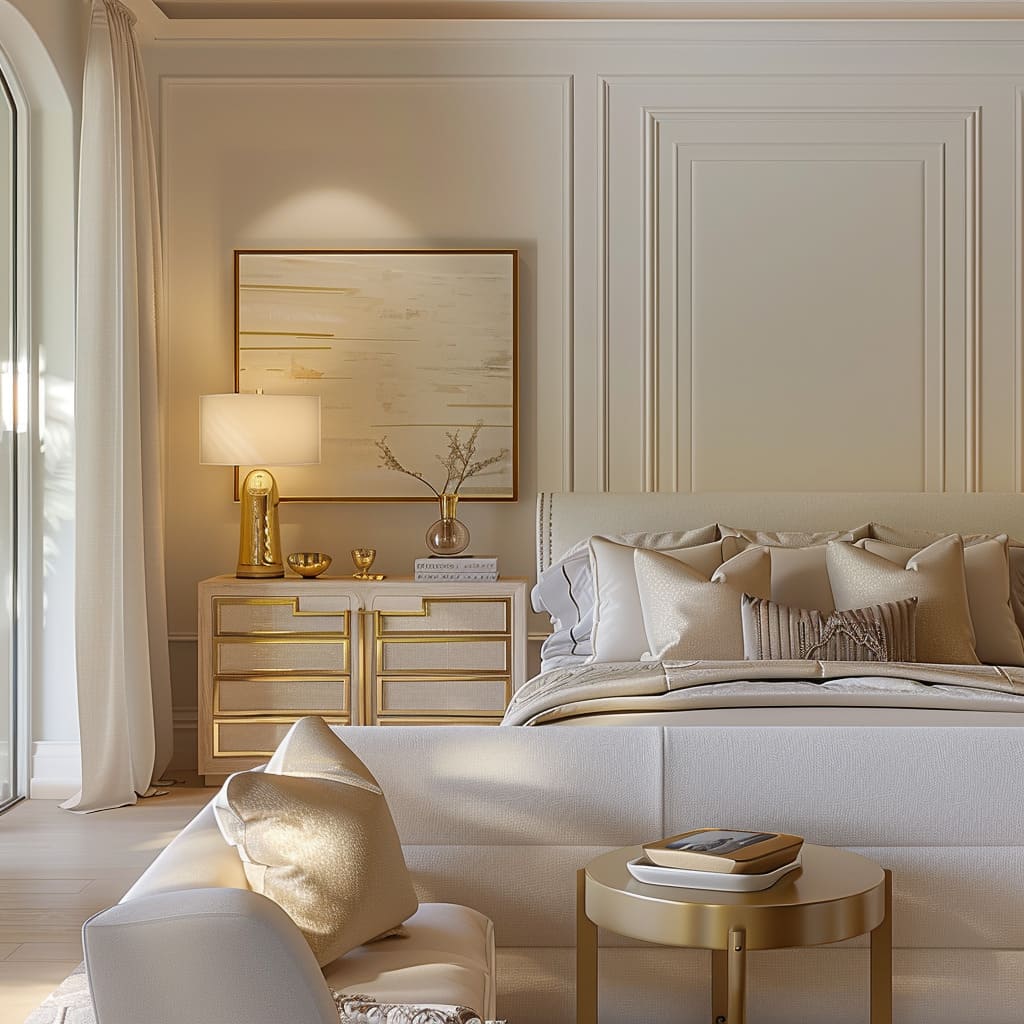A home is more than just a place of residence; it is a personal sanctuary, a canvas for self-expression, and a reflection of one’s tastes and experiences. As such, creating a stylish and luxurious home environment is not merely about following trends; it’s about crafting spaces that resonate with comfort, elegance, and personal identity.
The allure of luxury in interior design is timeless, evoking feelings of pleasure and a sense of achievement. However, indulging in such sophistication does not imply an extravagant expenditure.
The essence of a high-end design can be captured on a reasonable budget when approached with knowledge and creativity.
The concept of achieving a luxury interior design on a budget is rooted in the democratization of style. With the rise of various design resources and accessibility to marketplaces, what was once exclusive to the affluent is now within the reach of many.
It is possible to curate an opulent space that exudes richness and class without the high price tag. This narrative is about striking a balance—blending cost-effectiveness with a luxe aesthetic—to create a harmonious and indulgent home environment.
What, then, constitutes a stylish and luxurious interior? It is an ambiance marked by a deliberate selection of elements that collectively exude sophistication. Style is subjective, indeed, but luxury universally speaks to quality, comfort, and a certain je ne sais quoi that makes an interior stand out.
It’s in the seamless flow of the space, the cohesive color scheme, and the touch of unexpected materials that suggest a bespoke feel.
Attention to detail is the cornerstone of a luxurious home. From the meticulous choice of hardware for cabinetry to the thoughtful placement of art, every detail contributes to the overall narrative of opulence.
The color palette is another critical aspect; it sets the mood and character of the space. Rich, deep hues can convey warmth and intimacy, while light, airy tones might create a sense of serenity and space.
The quality of materials, even on a budget, should not be overlooked. With a discerning eye, one can source materials that offer durability and beauty without compromising the design’s integrity.
The myth that luxury is synonymous with excessive spending is being debunked as we embrace the art of designing on a budget. Creating a lavish look without overspending is a craft that involves strategic planning, resourcefulness, and an understanding of where to allocate funds for maximum impact.
It’s about being selective and investing in pieces that carry the weight of the design, allowing other elements to complement them without needing to be equally as expensive.
To design on a budget, begin with a plan. Understand the space you’re working with and what it needs to transform.
Prioritize your design choices—decide which elements are non-negotiable and which are flexible. For example, investing in a high-quality sofa might be more important than splurging on designer table lamps.
Know where you can compromise and where you shouldn’t. It’s also wise to phase your purchases, spreading out expenses and allowing for adjustments as the design evolves.
In the following paragraphs, we will delve deeper into how to navigate the journey of achieving a luxe aesthetic affordably, touching on the magic of material selections, the significance of striking furniture and decor, the transformative power of lighting, and the artful application of color and texture. Join us as we explore how to make your home a bastion of luxury, all the while maintaining a vigilant eye on the budget.
Selecting the right furniture and decor is pivotal when aiming for a luxurious look within a budget-friendly framework. The key is to seek out pieces that mimic the craftsmanship and design of high-end items without the accompanying cost.
One approach is to opt for classic designs in furniture—these often have timeless appeal and can be found at various price points. Retailers who offer mid-range products often take inspiration from luxury brands, which means it’s possible to find similar silhouettes and styles without the designer label.
Statement pieces are integral in defining the character and focal points of a room. A grand, velvet-upholstered headboard in a bedroom or a bold, sculptural coffee table in a living area can anchor the space, drawing attention and setting the tone for additional accessories and decor.
When choosing these pieces, consider their size, impact, and the story they tell within your space. The idea is not to clutter the room with numerous items but to allow each piece to stand out and contribute to the overall aesthetic.
Lighting is an often underestimated element in interior design, yet it has the power to transform the mood and atmosphere of a room completely. Ambient lighting, task lighting, and accent lighting should be layered to create a rich and dynamic environment.
Choosing light fixtures that reflect a luxurious style can also be done on a budget. For example, a chandelier or pendant light with a sophisticated design can serve as a centerpiece in a room, providing both illumination and elegance.
Accessories are the finishing touches that can elevate a space from ordinary to extraordinary. When selected carefully, they can impart a sense of luxury without being costly.
Consider using metallics such as gold or brass for smaller items like frames, vases, or candle holders—they lend a touch of refinement and are readily available at reasonable prices. Additionally, infusing your space with rich textures through pillows, throws, or rugs can add depth and interest, making the decor feel curated and intentional.
The palette of colors chosen for an interior plays a crucial role in establishing a luxurious feel. Rich, saturated colors like navy blue, emerald green, or burgundy can convey a sense of depth and opulence.
Alternatively, a monochromatic scheme with varying shades and tints of the same color can create a subtle yet sophisticated backdrop for your furniture and art. When incorporating these hues, balance them with neutral tones to avoid overwhelming the senses and to maintain a certain level of calm and elegance.
Texture is another tool in the luxury design arsenal. It adds a tactile dimension that can make a space feel more inviting and comfortable.
Think of the plush feel of a shag rug underfoot, the smoothness of a marble countertop, or the softness of a velvety throw cushion. These elements, when combined thoughtfully, give a room richness and complexity.
For instance, pairing a silky curtain with a matte wall finish can create an engaging contrast that adds to the overall sense of luxury.
Recommendations for color combinations and textures that evoke luxury might include a palette of warm grays and creamy whites, accented with touches of brushed gold for an elegant and modern feel. Alternatively, for a bolder statement, consider pairing deep jewel tones with high-gloss finishes and plush fabrics to create an atmosphere of indulgence and grandeur.
When selecting these combinations, always consider the natural lighting available in your space, as this can dramatically affect the appearance and mood of colors and textures.
By integrating these principles of furniture and decor selection, strategic lighting, and sophisticated color schemes and textures, you can construct an interior that breathes luxury and style without exceeding your financial means. In the subsequent sections, we’ll further explore the exciting realms of DIY projects and smart shopping techniques that allow for the realization of your dream space with prudence and flair.
For those looking to add personal flair and uniqueness to their home, DIY projects are a fantastic solution. These projects not only allow for customization to one’s precise taste but also present an opportunity to breathe new life into existing pieces.
For instance, repainting an old bookcase in a contemporary hue or adding new hardware to classic furniture can instantly modernize and add a fresh twist to the piece.
Upcycling is another sustainable and cost-effective approach to design. This involves transforming outdated or unused items into something of higher quality or value.
A vintage trunk, for example, can become an intriguing coffee table with storage space. Old dining chairs might gain a new lease on life with reupholstery in a current fabric.
These efforts not only save money but also give a space unique character that cannot be replicated with off-the-shelf purchases.
Becoming a savvy shopper is essential when decorating on a budget. One of the most effective strategies is to shop off-season, as many retailers discount last season’s items to make room for new stock.
This is especially true for decorative items and furnishings that are not bound to seasonal trends. Outlet stores and warehouse sales can also be goldmines for high-quality pieces at reduced prices.
It’s important, however, to inspect these items carefully for any defects before purchasing.
Investing in quality core furniture is a principle of smart shopping. While it may seem counterintuitive when discussing affordability, purchasing a well-made sofa or bed frame can actually be economical in the long run.
These pieces bear frequent use and are central to the function of your home, making their durability paramount. On the other hand, saving on trendy, decorative items allows for regular updates without significant financial impact.
Trendy pieces can be fun and fashionable, but they typically have a shorter stylistic lifespan.
Throughout this guide, we’ve explored a multitude of ways to achieve a stylish and luxurious home while maintaining a budget-conscious mindset. From the strategic selection of furniture and decor to the transformative power of lighting and the judicious use of color and texture, we’ve seen that elegance and opulence need not come at a premium.
We’ve discussed the rewarding process of DIY and upcycling, illustrating how personal touches not only save money but also endow your space with individuality.
We’ve also shared smart shopping techniques, emphasizing the importance of timing, location, and the careful selection of foundational versus trendy pieces. All these strategies are avenues to an interior that feels both luxurious and personal, proving that style is not solely the domain of the affluent but accessible to anyone armed with knowledge, resourcefulness, and a willingness to think creatively.
To you, the reader, remember that your home is a reflection of your unique journey and taste. With the insights provided, have the confidence to create a space that speaks to your definition of luxury and comfort, regardless of your budget.
In the end, it is the joy and satisfaction derived from your surroundings that define true luxury, and this, fortunately, is something that money cannot buy.
